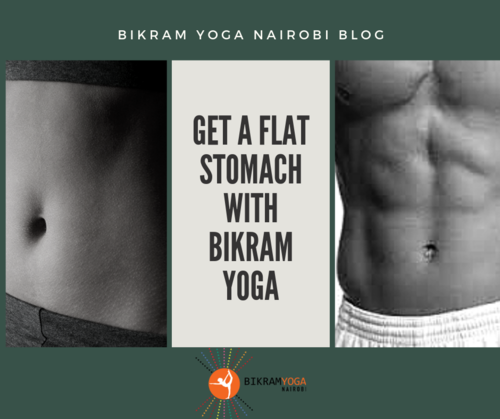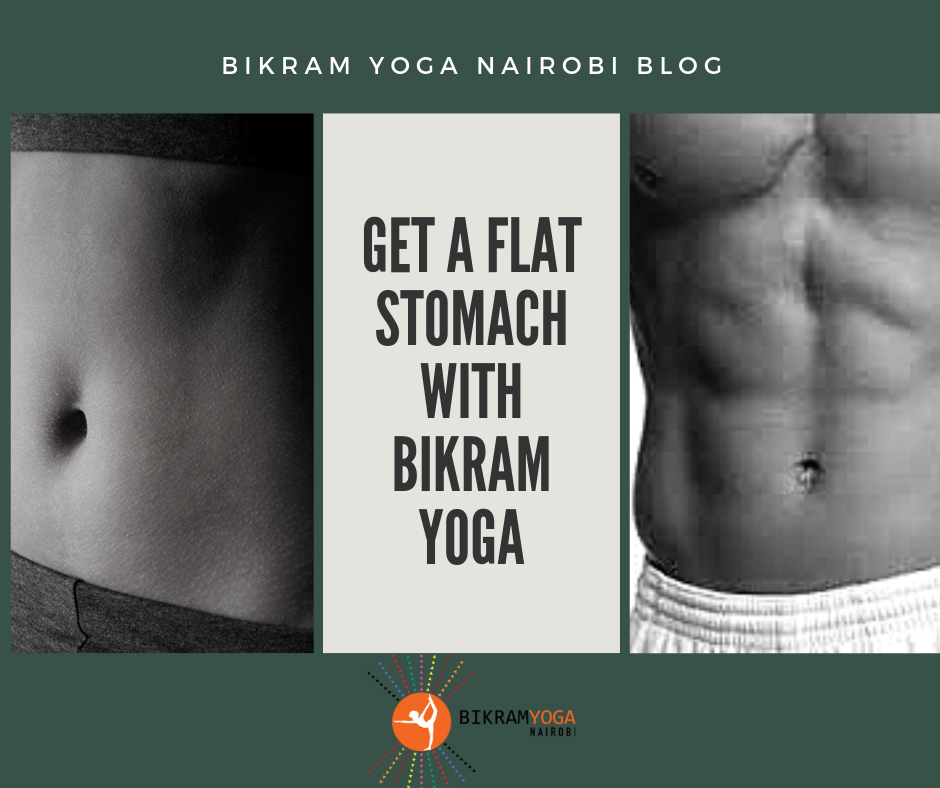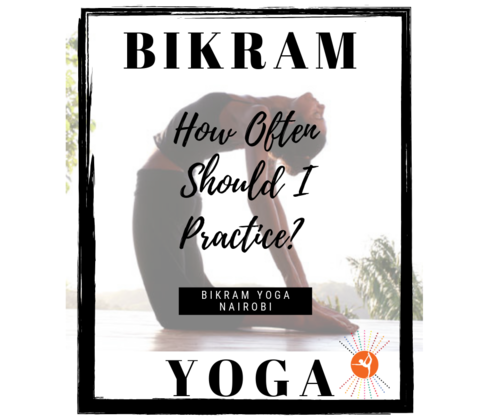The belly is a prized area of the body for many men and women. When fat appears for various reasons, people are often led to exercise as a means to get rid of it.
Spot reduction of problem areas doesn’t exist; if you only perform exercises that strengthen certain anatomical areas, you won’t reduce abdominal fat. You need to eat healthy foods and perform regular aerobic exercise to lose all-over body fat. Performing the entire Bikram series will offer the overall health benefits this style of yoga provides with consistent practice, including a toned midsection.
One question that we often get from both new and old students alike is “Where are the abdominals in Bikram yoga?” It’s going to be different for each person and you certainly have to exert the effort and do the proper form to work the core (in any exercise – even crunches!). Regardless of the posture you perform, you should always engage your abdominals. What you’ll find is that Bikram is a nearly 90 minute ab workout!
-
Pranayama: in breathing, the stomach should be sucked in on both the inhale and the exhale; core strength is used to push the air out of the lungs and keeping the stomach in on the inhale helps the lungs work harder to fill, increasing your lung capacity.
-
Half moon: Half Moon pose strengthens all of the core muscles located in the abdomen and the sides of the torso and releases energy from the spine to prepare you for the rest of the Bikram series. Half Moon pose is the first pose of the Bikram series and is particularly beneficial for strengthening the abs. The first part of the pose prepares you for the backbend in the second half, which mimics the gut-busting reverse crunch, one of the top exercises used to tone the belly. With regular practice as part of a whole-body workout, expect the Half Moon to tighten your lower abs, waistline, buttocks and thighs.
-
Awkward: four times in this posture (in parts 1 and 3), the dialogue says something to the effect of “suck it in.” When you’re sucking it in that hard and trying to keep a straight spine, you can’t help but do some work in the abdominal muscles!
-
Eagle: twice here the “suck it in” revisits. Right before you sit and at the end of the posture.
-
Standing Head to Knee: another forward bend so definitely suck the stomach in before rounding down to grab your foot. Another benefit – the tighter you suck your stomach in, the easier it feels to tighten up your glute muscles and leg muscles.
-
Standing Bow: opens the diaphragm and lungs to improve circulation. When you properly engage your abs, this ordinarily difficult pose becomes easier; however, it may take several tries before you can balance successfully. When practiced regularly, this pose firms the abdominal walls, helping tone the upper and lower abdominals as part of a full-body workout.
-
Balancing Stick: every single muscle should be contracted in this posture, including the abdominal muscles!
-
Standing Separate Leg Stretching and Standing Separate Leg Head to Knee are both forward bends so suck the stomach to the spine as you go into them and then challenge yourself to keep it held in the whole time. The constant trying to keep it in is a great ab workout.
-
Triangle: trims the waistline as you use your abs and constantly lift from the lower belly.
-
Toe Stand: forward bend! Suck it in!
-
The Situp: need I say more? Ok, keeping the heels on the floor helps the situp work more of the lower abdominals as well
-
Spine Strengthening Postures: We tend to let our bellies relax in most of these and focus on our spine. But a strong spine must be balanced with a strong core. Cobra, Locust, Full-Locust, and Bow are just the poses to tone your entire midsection. And remember that a “tight body is a light body”. The more you tighten your core, the easier it will be to lift off the ground.
-
Half-Tortoise: Oh yah, this is where it’s at. The whole way into and out of this posture, when you’re slowly lowering your body down or slowly bringing it back up with a straight spine, the core muscles should be working HARD.
-
Rabbit: the extra dialogue in this one definitely calls for sucking it in and depressing the abdominal wall (also another forward bend).
-
Separate Leg with Stretching: a forward bend where you curve your spine; sucking the stomach in on this one really helps you get your head closer to your stomach (more compression = more medical benefit!).
-
Spine Twisting: the more you suck your stomach in, the easier it will be to twist.
-
Blowing in Firm: the dialogue clearly states that this one is good for the abdominal muscles. You should even feel a little cramping in the abs as you do this one from using them to quickly blow the air out of the lungs.


